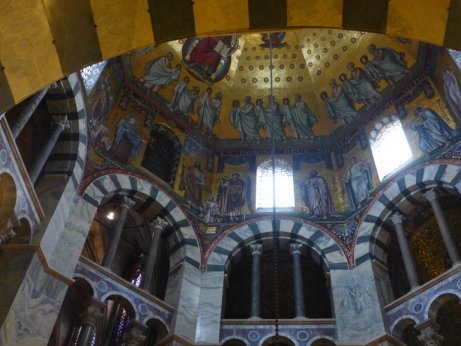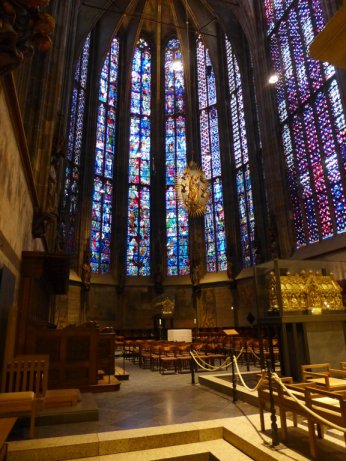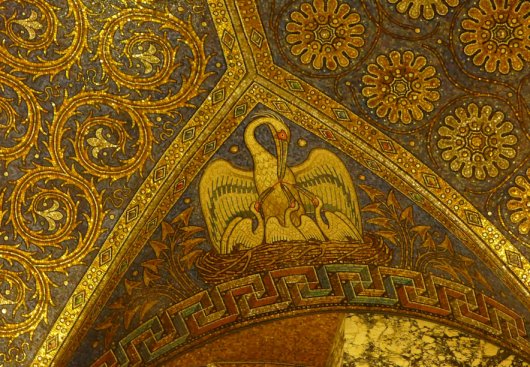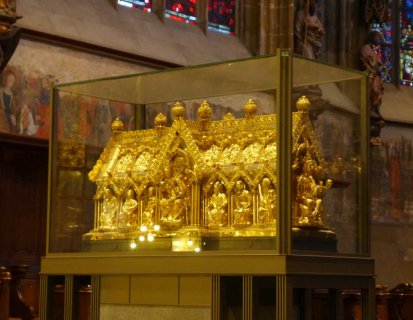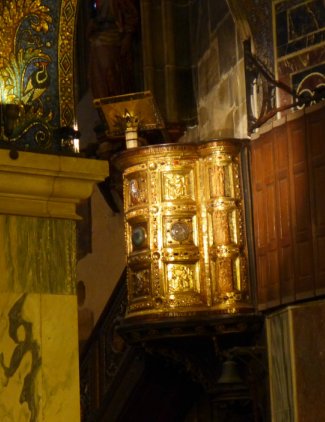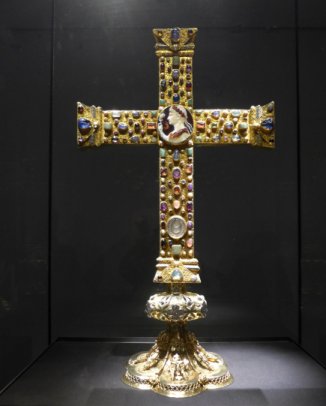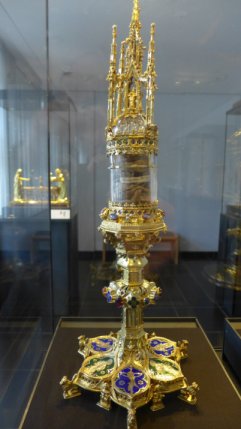|
Aachen |
|
| Aachen is best known
for its association with Charlemagne in the late eighth and early ninth
centuries, and for the Palatine Chapel built by him and where his
remains have achieved almost holy relic status. the Palatine chapel now forms a part of Aachen Dom (cathedral). Many side chapels have been added, and a gothic choir very reminiscent of Saint Chapelle in Paris. The Palatine chapel itself was modelled on San Vitale in Ravenna, and my wife and I were keen to compare it with that wonderful building. Well, San Vitale wins hands down. Aachen is heavy, and brightly lit with electric light because of the small windows. S. Vitale is lit by daylight, the right sort of light for mosaics. The Aachen mosaics are good, but, being nineteenth century, perhaps just too perfect. |
|
|
|
|
|
|
|
| Perhaps I’m being too harsh. The choir is very fine, and some of the objects inside – the pulpit, various reliquaries – wonderful. | |
|
|
|
| One grumble is that
access is quite limited – side chapels all shut up, the choir roped off. Speaking of relics, Aachen certainly has its fair share of significant ones, both here and in the splendid Treasury. The Marienschrein is said to contain the Swaddling clothes of Jesus (sometimes identified as Joseph’s socks – see my pages on the Nativity here), His Crucifixion loincloth, a gown of the Virgin Mary and the decapitation cloth of John the Baptist. I mentioned the Treasury. This is a place that must be visited. There are some fine paintings, many beautiful items including the thousand year old Cross of Lothair, and, yes, more relics: the belt of Christ, a cord used in the flagellation, and the belt of the Virgin, which is odd, for as I wrote about here, this belt is also in Prato, Italy, in Homs, Syria, and in a monastery on Mount Athos in Greece. |
|
|
|
|
|
|
|

